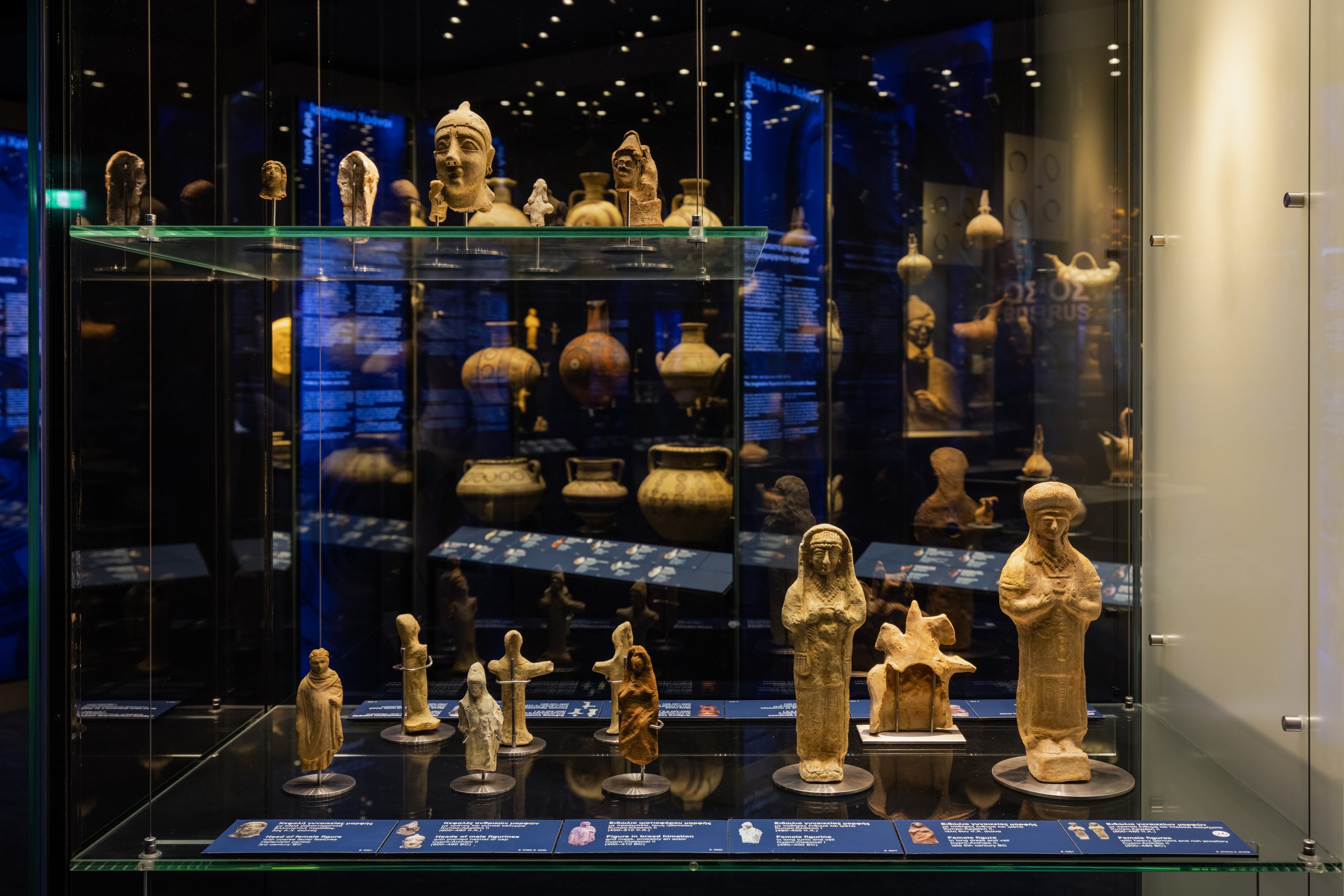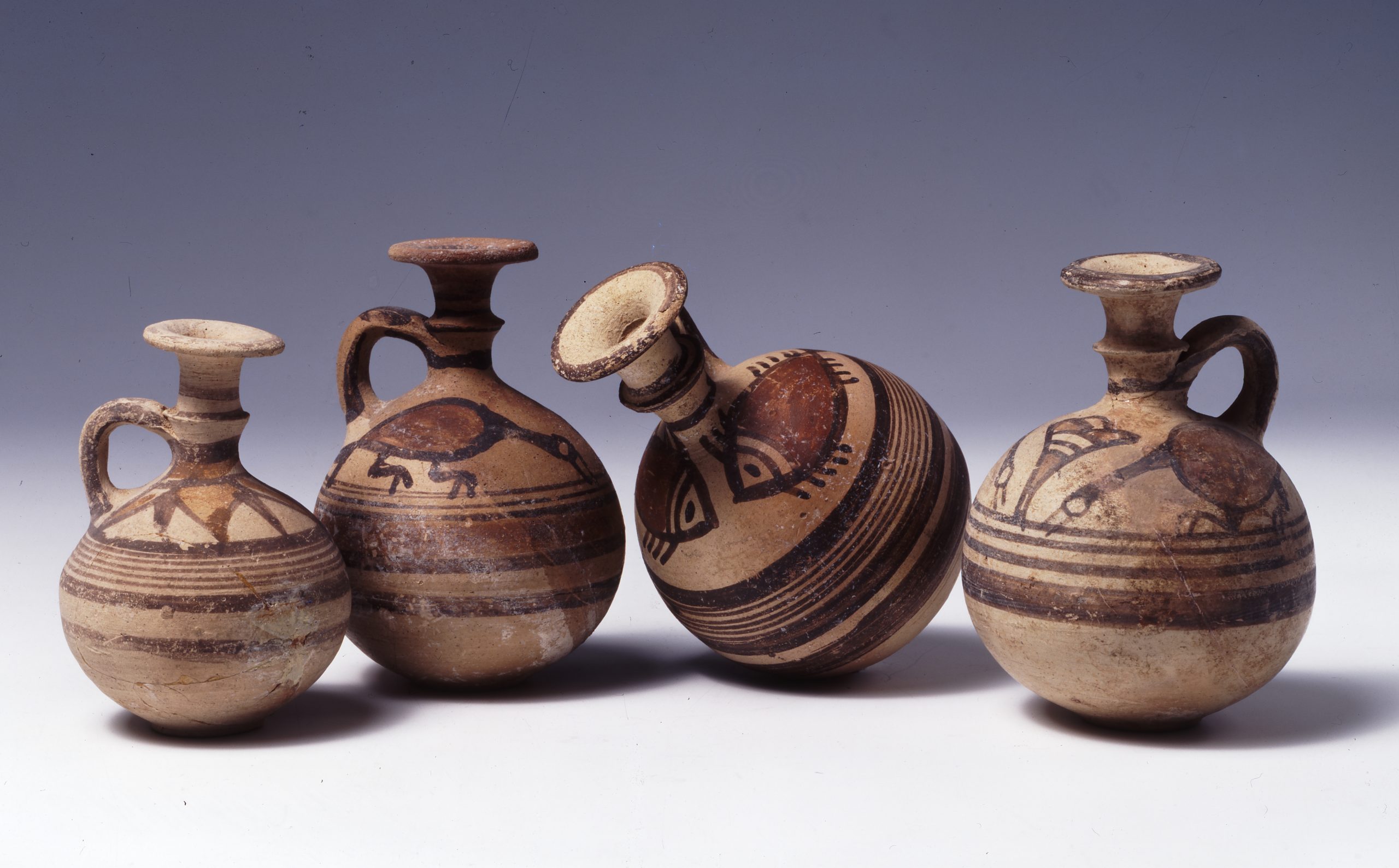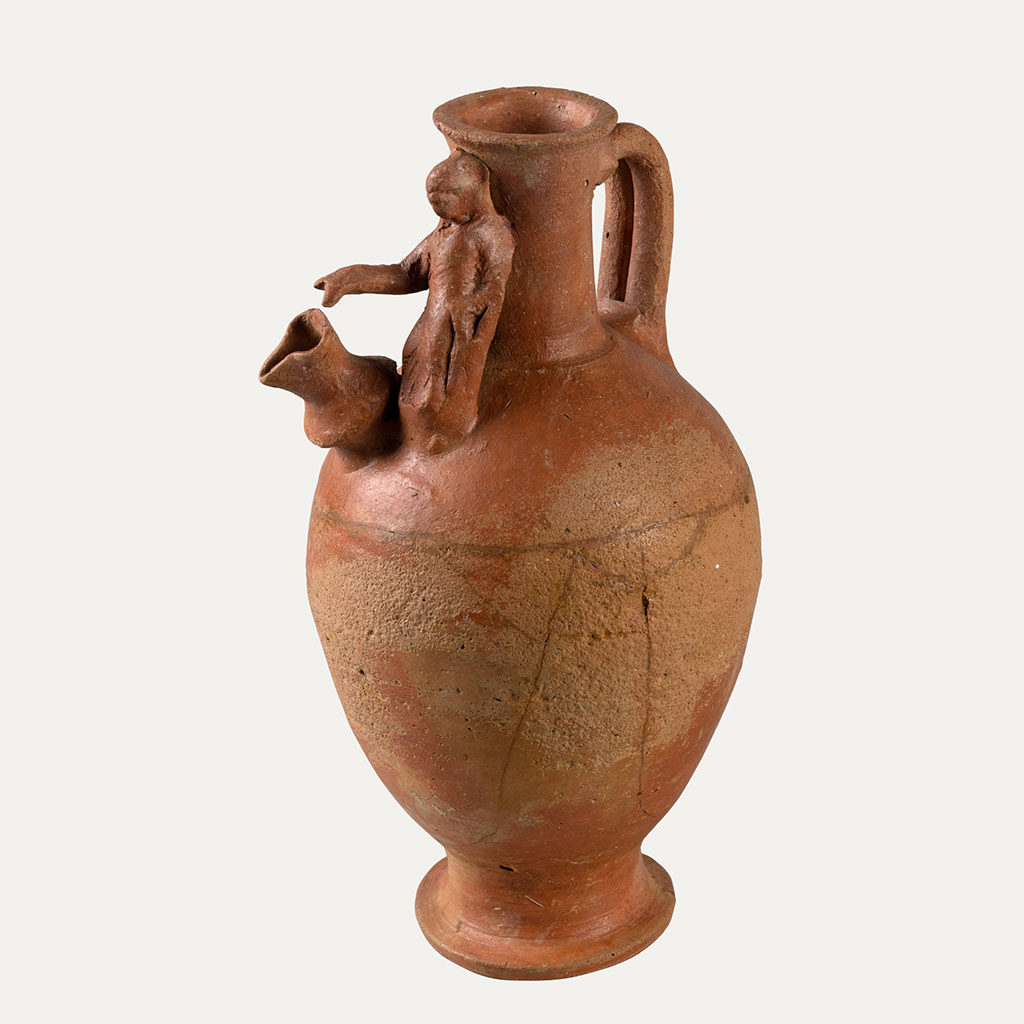Cyprus in historical times
CYPRIOT ART

CYPRO – GEOMETRIC
(1050 – 750 BC)
The turmoil in the Eastern Mediterranean during the late 13th and early 12th centuries BC greatly affected Cyprus. New settlements were established and a new form or political organization – based on ten independent kingdoms – gradually made its appearance. The strategic location and the availability of raw materials (metals and timber) helped Cyprus regain its role as a centre of Mediterranean trade, forging relations with the Syro-Palestinian littoral, Egypt, and Crete.
The founding of a Phoenician colony at Kition – in the 9th c. BC – gave fresh impetus to commercial activities. New cultural elements were introduced to the island too, such as the Phoenician language and the cult of Astarte (which was later assimilated into the worship of Aphrodite). The art of the period has a distinctly local idiom, despite the influences from the Orient and the Aegean. As early as the 11th c. BC, a new syllabic system of writing (Cypriot syllabary) was developed, which was used continuously until the 3rd c. BC for the ancient Cypriot and Greek language.
CYPRO – ARCHAIC
(750 – 475 BC)

The Archaic period was one of intense political and cultural growth on Cyprus. In 709 BC, most of the island’s kingdoms were subjugated by Assyria and remained under Assyrian rule until 669 BC. Then, one of the rare periods of independence for Cyprus began, lasting until 560 BC – when the Cypriot kingdoms were forced to become vassals of Egypt.
However, Egyptian rule was short-lived, since, in 526/5 BC, the island was captured by the Persians. In 499 BC most of the Cypriot kingdoms allied themselves with the Greeks of Ionia in their revolt against the Persians. The effects of the continuous invasions and power changes do not seem to have negatively impacted Cyprus, which continued to thrive as a centre of trade. However, the insurrection of 499 BC brought Cyprus into closer contact with the Hellenic world.
CYPRO – CLASSICAL
(475 – 312 BC)
The Cypro-Classical period was scarred by the Cypriots’ futile struggle against the Persians –– which were frequently instigated by the Greeks. This struggle continued until the reign of Alexander the Great. In this period, the political and cultural ties with the Aegean reinforced the Hellenic identity of the Cypriots and directed the arts, particularly sculpture, towards Hellenic models.
Many oriental deities were identified with Greek ones (Astarte with Aphrodite, Anat with Athena, Melkar with Herakles, Resef with Apollo, and Baal with Zeus) and the Greek alphabet began to be used in the latter years of the 5th c. BC, alongside the existing Cypro-syllabic script. An analogous tendency of “Hellenization” is observed in other sectors too, such as coinage, jewellery, dress, and objects for domestic use.
HELLENISTIC PERIOD
(312 – 58 BC)
This brought forth the demise of the old Cypriot kingdoms and the creation of a more centralizing authority, which was exercised by a plenipotentiary of the Ptolemies – the strategos, which was based initially at Salamis and later at Nea Paphos. Cyprus was of vital importance to the Ptolemies due to its strategic position, rich copper ores, and abundant timber – which was essential for shipbuilding.
The island’s art was influenced by the contemporary cosmopolitan currents of the Hellenistic koine, reflecting influences from both Egypt and the Greek mainland. Ultimately, the Greek alphabet prevailed, while many Egyptian elements were adopted in religion – such as the worship of kings and rulers.
ROMAN PERIOD
(58 BC – 395 AD)
The strategic location of Cyprus in relation to Egypt made it a source of tension between the Ptolemies and the Romans during the second half of the 1st c. BC, with resultant political instability on the island. When Rome finally prevailed, Cyprus came under Roman rule (30 BC) and was declared a senatorial province (22 BC) – with Paphos as its capital.
The Romans were interested in the island’s wealth and imposed heavy taxes. At the same time however, the Romans carried out important infrastructure works and adorned the cities with grand civic buildings and splendid artworks – particularly during the reigns of Trajan and Hadrian. The language and culture of Cyprus remained Greek (continuing the Hellenistic tradition), while in 45 AD, Paul the Apostle and his disciple Barnabas visited the island and preached Christianity. The resistance of the large Jewish community of Cyprus to the new religion culminated with the Jewish Uprising against the Romans in 115-117 AD, which ended in the final expulsion of the Jews from the island by Emperor Trajan. The Christian communities grew, and, at the First Ecumenical Synod of Nicaea (325 AD), Cyprus was represented by three bishops. After the division of the Roman Empire (395 AD), the history of the island was inextricably linked with that of the Byzantine Empire.




